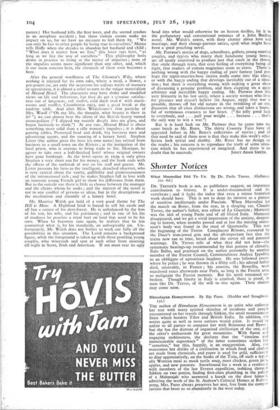THE author of Himalayan Honeymoon is an artist who enlivens
her text with many spirited sketches of incidents and people encountered on her travels through Sikkim, the small mountainous State which borders Tibet and British India. In addition, she writes quite as well as most authors would paint. It would be unfair to all parties to compare her with Rousseau and Byron: but she has the distrust of organised civilisation of the one, and the other's enthusiasm for great mountains. With fluent and engaging recklessness, she declares that the "timeless and immeasurable supremacy" of the latter sometimes strikes her "senseless," but this, happily, is an exaggeration. Also, she overcomes her dislike of a civilisation in which food and clothes are made from chemicals, and paper is used for gold, sufficiently to dine appreciatively, on the banks of the Tista, off such a typic- ally Western meal as mock turtle soup, roast chicken, green pees, apples, and new potatoes. Snowbound for a week in a resthou',e with members of the last Everest expedition, trekking throtO Sikkim on two ponies, finding first-class plumbing in the -palace of a Maharajah who answered a knock on the door himsel, admiring the work of the St. Andrew's Colonial Homes at Kalin.- pong, Mrs. Pares always preserves her zest, free from the convo- cations that beset us so abundantly in the west today.






























 Previous page
Previous page